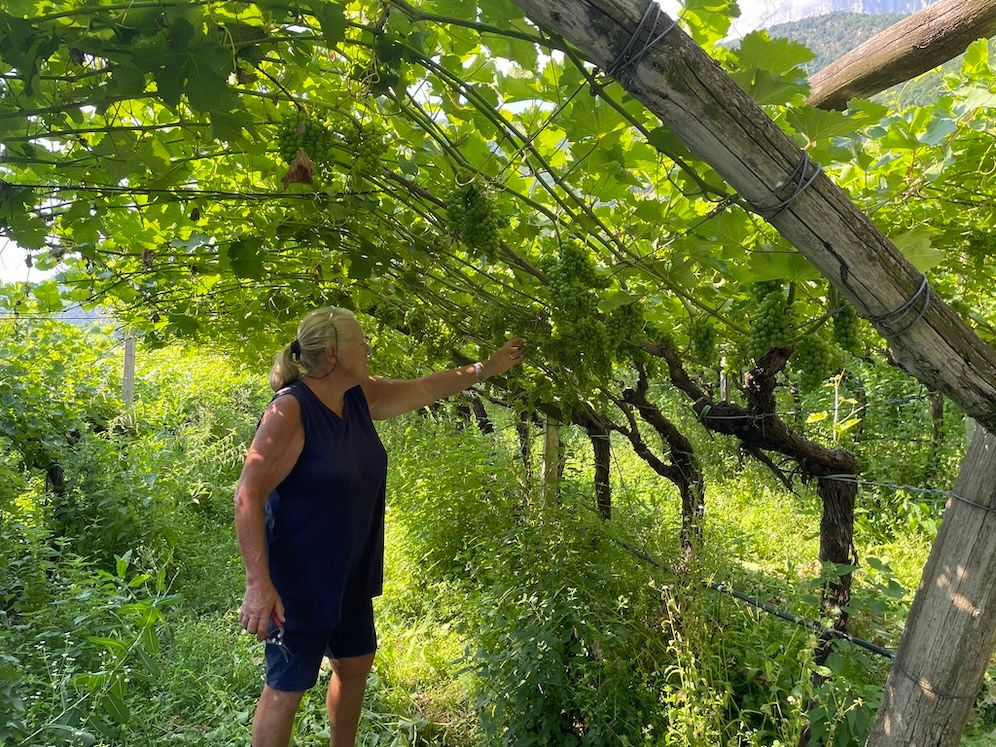Following my recent visit to Cantina Terlano in Alto Adige, a classic Chinese tale comes to mind. The story of Bó Lè, a legendary horse expert for the king, who recognised the hidden potential in a seemingly unimpressive horse and was later proven right as the horse excelled. In my view, Cantina Terlano is the modern-day Bó Lè, a talent scout for Pinot Bianco.
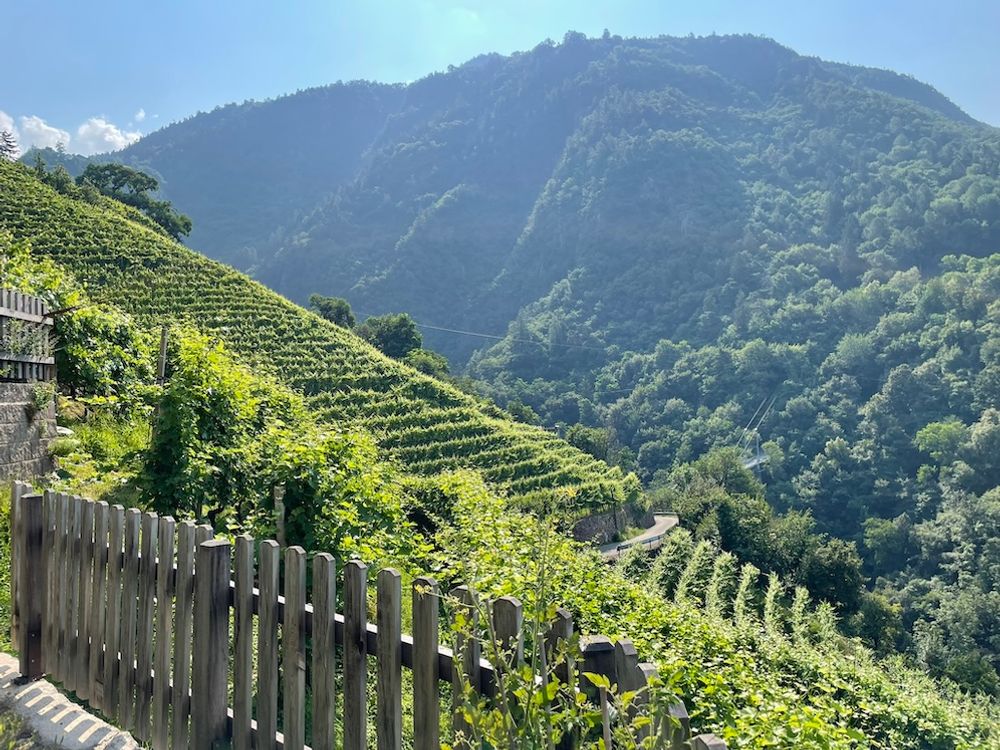
Steep slope vineyards of Pinot Bianco at Vorberg
No longer a workhorse grape - in the right hands
Often regarded as a workhorse grape in Alsace, Pinot Bianco (Pinot Blanc) was frequently mistaken for Chardonnay until the late 19th century. While it earns some respect in Germany as Weissburgunder, few producers worldwide have gone to the lengths of Cantina Terlano to fully explore Pinot Bianco's potential.
Cantina Terlano, one of Alto Adige’s 12 cooperatives, is situated in the Commune of Terlano near Bolzano. It comprises 143 member-growers who cultivate a total of 190 hectares. The cooperative is renowned for producing super-premium wines. Established in 1893 by 24 growers, Cantina Terlano has shifted from the region’s historic focus on red wines to achieving acclaim for its outstanding whites, especially Pinot Bianco, which has been grown there since 1870.
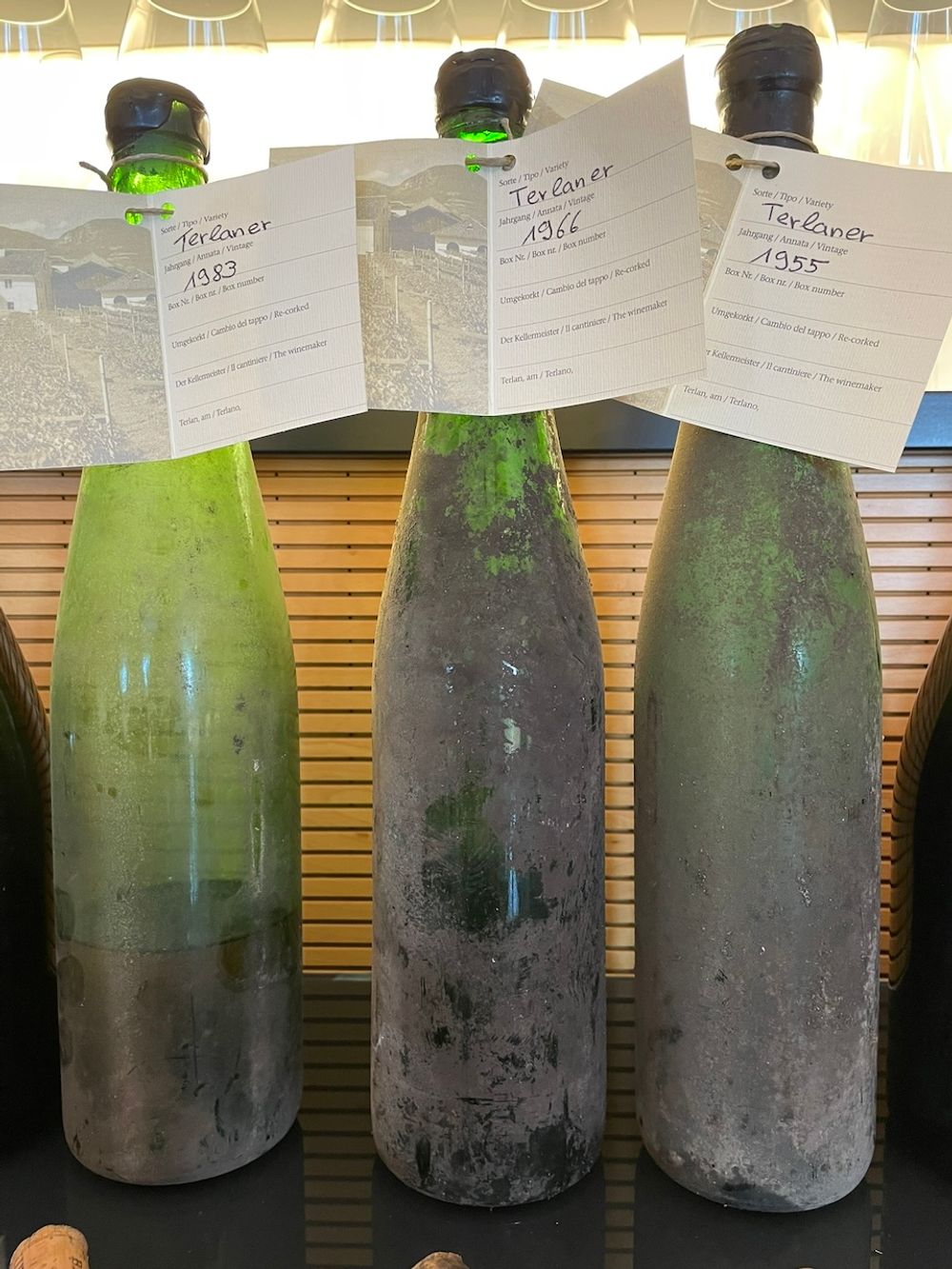
Sebastian Stocker was Cantina Terlano’s winemaker from 1955 to 1993 and was a key advocate for Pinot Bianco. Inspired by sparkling winemaking, he aged the best Pinot Bianco wines on fine lees in steel tanks (2,500 litres) and curated a library of vintages dating back to 1955, including some from much earlier, which he famously hid in various locations within the winery, with some bottles yet to be found. Tasting old Pinot Bianco from as early as 1955 has been a truly humbling experience.
'Burgundian' style quality control
Not all Pinot Bianco wines have such longevity, however. At Cantina Terlano, the key to their exceptional ageing potential lies in meticulous site selection and a rigorous quality control system that all growers must adhere to. Only Pinot Bianco from the finest sites, tended by the most skilled growers, makes it into the top cuvées.

"Not all growers are pleased with the strict rules," - Klaus Gasser, Cantina Terlano‘s commercial director
To achieve this, Cantina Terlano employs a classification system similar to Burgundy's, where vineyards are rated based on quality. Growers follow strict protocols to uphold high standards and are compensated through profit sharing rather than fixed prices at harvest. "Not all growers are pleased with the strict rules, but they know they will be rewarded if they adhere to them," explains Klaus Gasser, Cantina Terlano‘s commercial director.
To ensure compliance and avoid losing quality points that could impact their final payment, agronomist Simon Kompatscher, described by Gasser as the Cantina’s "quality police," constantly monitors the vineyards and advises growers.
But just how strict can these rules be?
During our visit to one of the growers, Karin Nocker shared her experience. “Simon controls everything—it’s a bit excessive,” Nocker complained, though not without a beaming smile. She continued, “There was a lot of rain this year, and the weeds thrived. A few weeks ago, I planned to cut them, but Simon advised against it, saying it helps maintain competition among the vines. We had no choice but to wait. In the past, we would never have allowed the weeds to grow so much; it makes the vineyard look neglected.”
However, she later observed that those who had removed the grass earlier ended up with larger grape berries, while those who followed Simon’s advice had smaller bunches with more concentrated flavours.
At the time of our visit in July, Nocker was busy pruning grape bunches. “We’ve been instructed to remove the bottom half of the bunches to concentrate the fruit flavours. Not many growers are prepared to do this. It’s painful to see the wastage, but it’s all for the sake of quality,” Nocker explained.
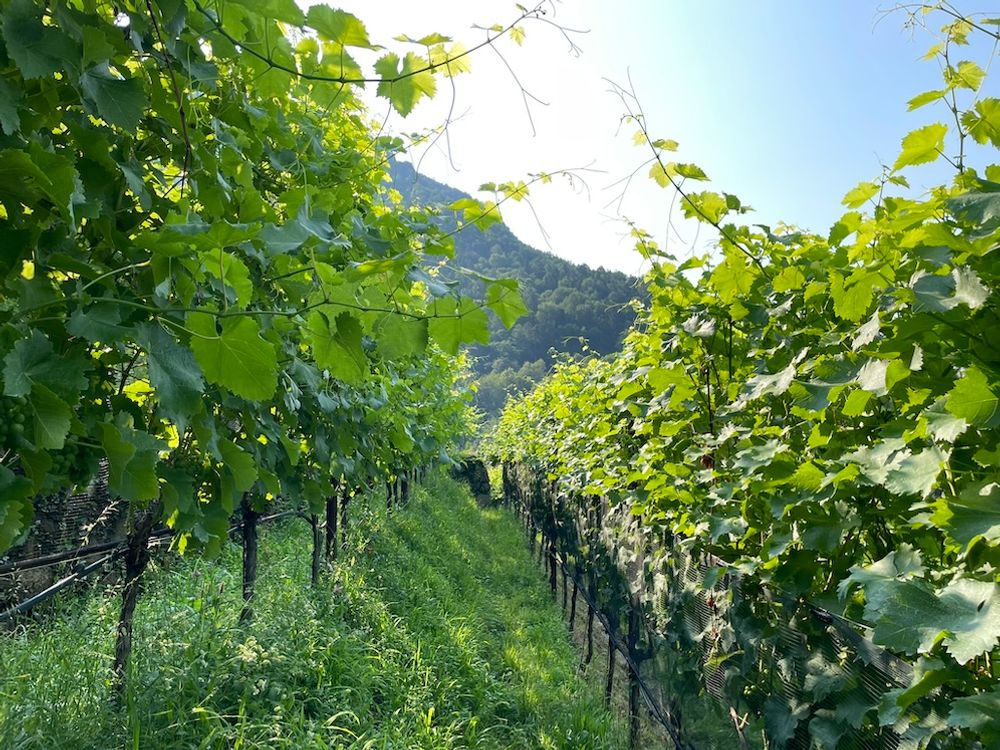
Vines in the 'Grand Cru' zone grown between 480 and 650 metres achieve optimal ripeness
Cantina Terlano’s quality control system is rigorous. Each vineyard parcel undergoes an internal classification established by technical director Rudi Kofler. For instance, the "Grand Cru" of their Pinot Bianco vineyard is situated in the stunning Vorberg area. Here, Pinot Bianco thrives at altitudes between 450 and 900 metres, with the “Grand Cru” zone specifically between 480 and 650 metres. These vineyards consistently achieve optimal ripeness, and the significant diurnal temperature variation—from 35°C during the day to 14°C in the evening—helps the Pinot Bianco retain its refreshing acidity.
These vineyards, perched on very steep slopes, have been cultivating Pinot Bianco since 1870. While working in such challenging terrain is demanding, it is also highly rewarding. Cantina Terlano’s reputation for super-premium wines, featured on the wine lists of renowned establishments and many Michelin-starred restaurants worldwide, ensures that growers are well compensated through profit sharing. This setup means the Cantina Terlano team essentially works for the growers, not the other way around. The greater the Cantina’s profits, the better the growers are compensated.
For those cultivating in the Vorberg area, if their vineyards are selected for top cuvées like the super-premium “Rarity” range, the price for their grapes can reach as high as €15-16 per kilo. Grapes destined for the Vorberg range might still fetch around €8-9 per kilo. Unlike common practice, the price is not determined at harvest but when profits are calculated and shared among growers based on their quality assessment points for the vintage. Various factors influence the final price, but growers have a good sense of their potential earnings based on the wine range their grapes are destined for and previous years' prices. It is fair to say that the prices are remarkably high compared to many other regions in Italy and beyond.
At Cantina Terlano, the pursuit of sustainability is intrinsically linked to its quest for quality. In recent years, it has banned herbicide use across all its vineyards and have reduced bottle weights, particularly for the premium ranges.
"These measures are designed to ensure that our members, who are all small-scale farmers, can remain economically sustainable while focusing on producing high-quality grapes," concludes Gasser.
My top five Pinot Bianco wines from Cantina Terlano:
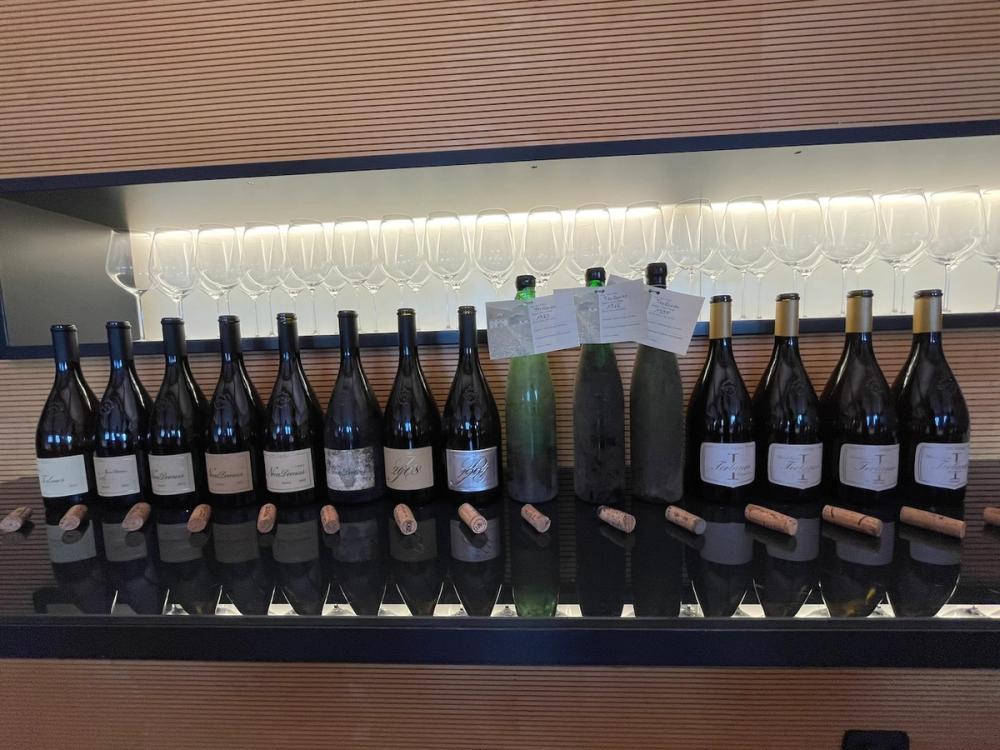
The full and impressive range of Cantina Terlano wines
Terlaner Primo I Grande Cuvée 2021
65% Pinot Bianco, 33 % Chardonnay, 2 % Sauvignon Blanc
First released in 2011 and now in its 10th edition, this wine demonstrates just how complex a Pinot Bianco blend can be. Fermented in 12 hl oak casks, with malolactic conversion and 12 months of ageing on the lees in large wooden barrels. The wine displays a perfect balance of minerality and freshness, featuring zesty lime, fresh stone fruit, and a hint of salinity. It is creamy and nutty with impressive structure, highlighting its excellent ageing potential.
Terlaner Primo I Grande Cuvée 2016
75% Pinot Bianco, 23% Chardonnay, 2% Sauvignon Blanc
Blossoms, orange peel, herbs and smoky on the nose followed by a salty, yeasty note and finishes with refreshing, zesty undertones. Its elegant structure and subtle texture create an unmistakable character, with a long finish that highlights its unique mineral terroir.
Rarity Terlaner 2008
85% Pinot Bianco, 10% Chardonnay, 5% Sauvignon Blanc
Sourced from 60-65-year-old vines, this wine is fermented in stainless steel tanks, followed by malolactic conversion and 12 months of ageing on the lees in large wooden barrels. With a further 11 years of lees ageing in steel tanks, without filtering or fining. The wine boasts pronounced aromas of ripe apricot and peach, alongside dried apricot, pastry, and flinty notes. On the palate, it offers a creamy, velvety texture with vibrant acidity and a firm structure.

Terlaner 1955
Tasting such an old and rare Pinot Bianco is a truly humbling experience. The wine reveals an astonishing freshness, dominated by honeyed stone fruit notes, zesty acidity and a nutty note. It’s complex, structured, and concentrated—truly impressive.
Terlaner 1966
A completely different evolution compared to the 1955. Notes of coffee, mocha, hazelnut, and salted caramel intertwine with dried apricot and brisk acidity. This is a wine to savour slowly by the fire, showcasing Pinot Bianco's remarkable ageing potential.
